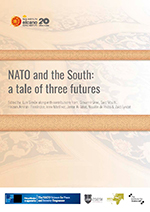As recently underlined by the NATO 2030 report, NATO’s Southern Neighbourhood is an area of conventional challenges and growing asymmetric threats. On top of all the security dilemmas in the Middle East, North Africa (MENA) and broader Sahel regions, Russia is already a threat in the south, and China’s growing presence in the region is also a source of concern. The Alliance has already agreed that it is needs to engage in capacity building with southern neighbours and partners, improve its awareness and risk monitoring, increase its own resilience and responsiveness to security challenges in the south and work with close partners such as the European Union (EU). However, working out the terms of NATO’s engagement in the south requires a clearer understanding of regional dynamics, and their likely evolution over time.
The study leads to a number of policy recommendations such as NATO invests in partnerships with the EU, Gulf Cooperation Council (GCC), the African Union (AU) and other bodies in the south. The south poses a challenge for NATO’s collective defence, crisis management and cooperative security tasks, but sub-regional complexes are increasingly interconnected and open to exploitation by powers such as Russia and China. In line with the NATO 2030 Report, this study reiterates the importance of a ‘consistent, clear and coherent’ approach to the south.
See also: Roundtable “Scanning NATO’s future to 2030. Implications for the South”.


